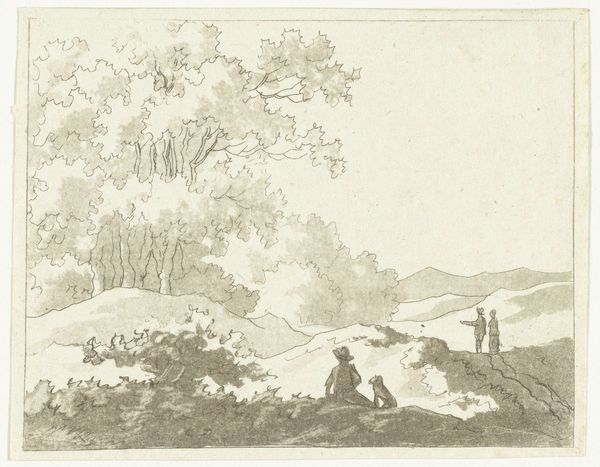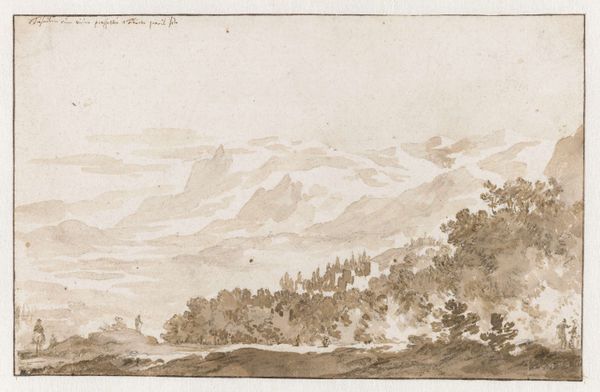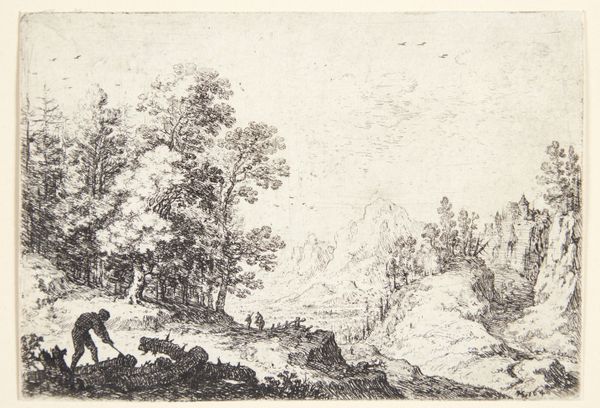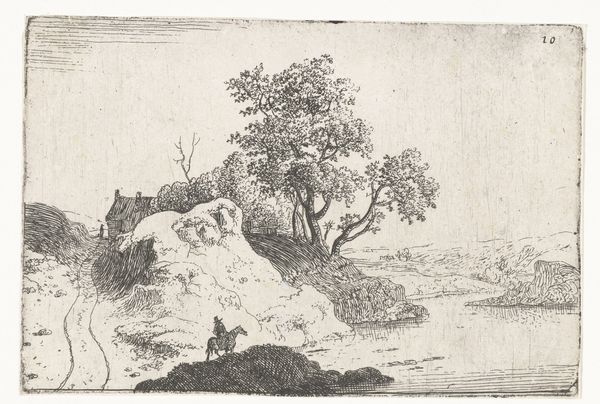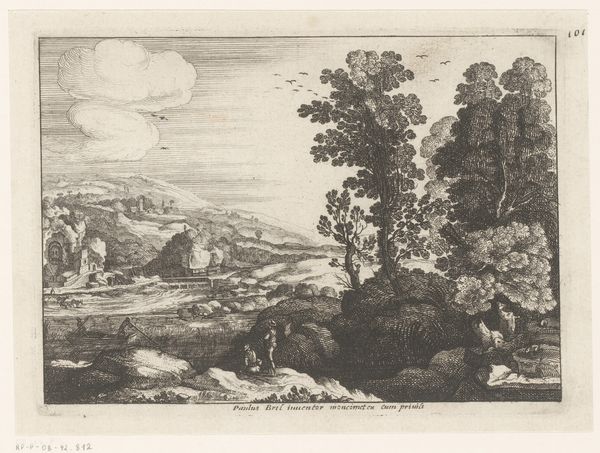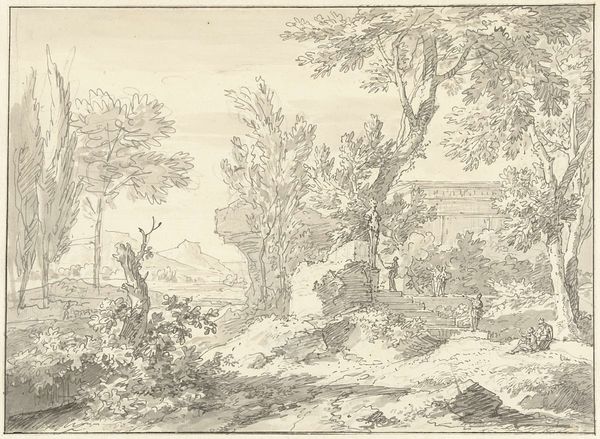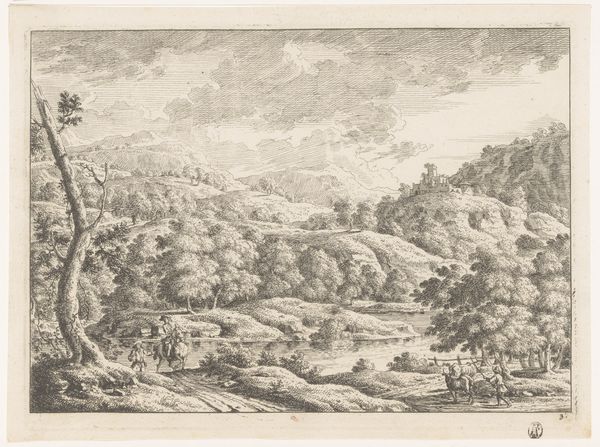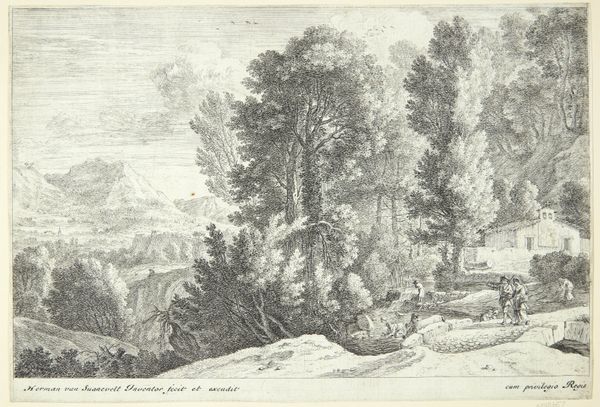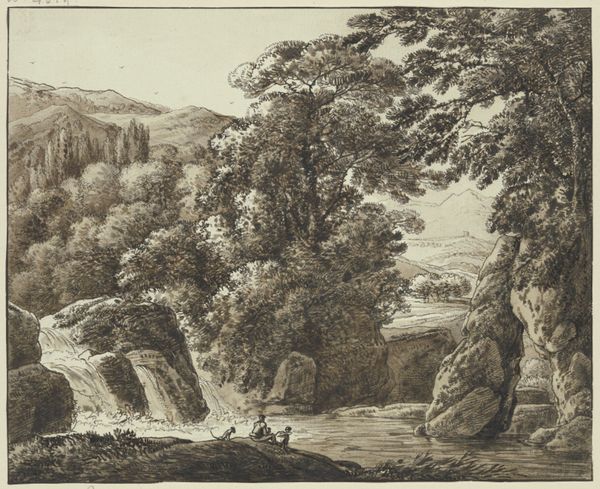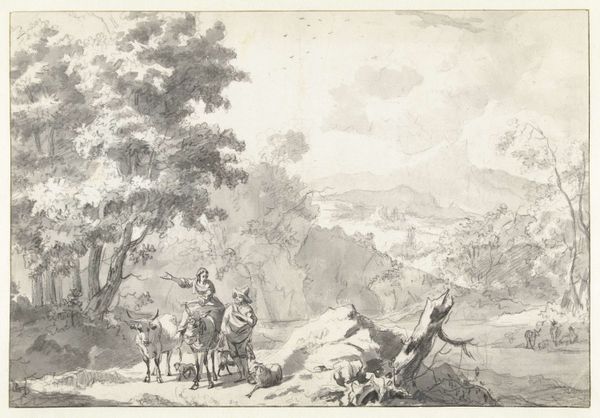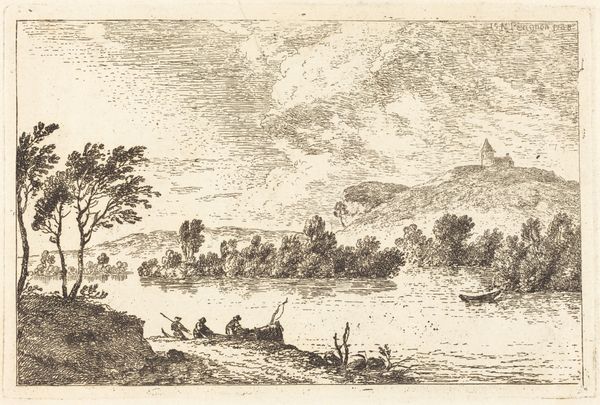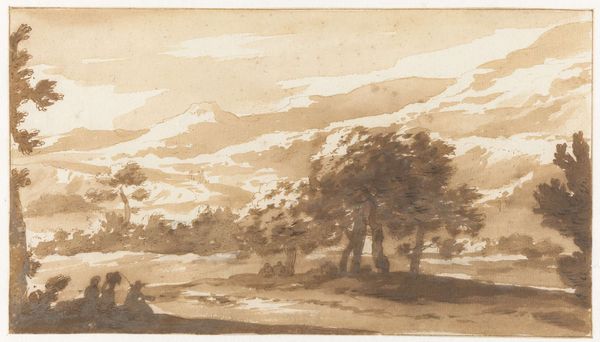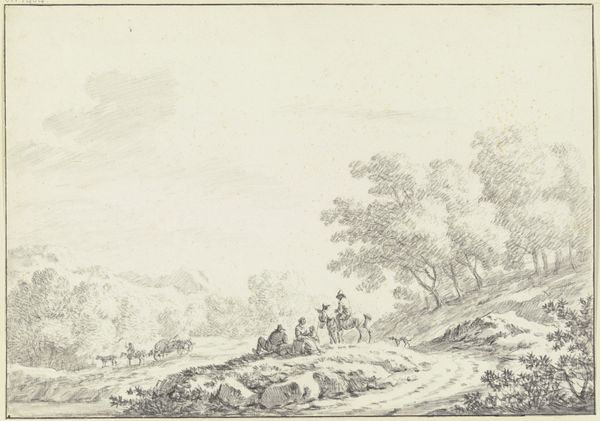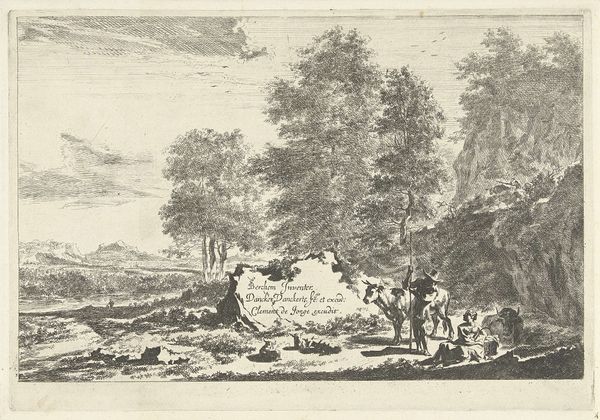
drawing, etching, pencil
#
drawing
#
etching
#
pencil sketch
#
landscape
#
etching
#
pencil
#
realism
Dimensions: height 83 mm, width 105 mm
Copyright: Rijks Museum: Open Domain
Editor: This is *Duinlandschap*, or Dunes Landscape, by Anthonie van den Bos, made sometime between 1778 and 1838. It's a pencil and etching on paper, giving it a very delicate feel. The whole scene has a peaceful air. What captures your attention most when you look at this piece? Curator: Well, I’m immediately struck by how this seemingly simple landscape hints at complex relationships between humans and their environment. Look at the figures—they are small, almost overwhelmed by the vastness of the dunes and the imposing trees. To me, this visual imbalance speaks volumes about the power dynamics at play during that time. What’s man's place within nature? Do they dominate or coexist? Editor: I see what you mean. There are people in the background, gesturing toward the landscape. But there’s also a seated figure with a dog in the foreground. It almost feels like there are two different relationships being presented. Curator: Precisely. And the act of depicting these figures *within* a landscape, it's a loaded one. Consider the tradition of landscape painting as a symbol of ownership, of national identity. Are these figures simply admiring the view, or are they laying claim to it in some way? And what about the role of class in determining access to and control over the land? Editor: So you're saying the act of portraying this landscape could reinforce certain social hierarchies of that period? Curator: Absolutely. And van den Bos's technique—the starkness of the etching combined with the soft touch of the pencil—adds another layer of meaning. It’s both realistic and somewhat romanticized. It invites us to question whose perspective we are seeing and what the power relations are in that gaze. Do you feel the same? Editor: I do now! I initially saw a simple landscape. I'm now seeing that it is part of broader discourses. I'll look at landscapes differently going forward. Curator: And hopefully this encourages everyone else to as well, reflecting critically on their own relationship with both the art and the natural world.
Comments
No comments
Be the first to comment and join the conversation on the ultimate creative platform.
